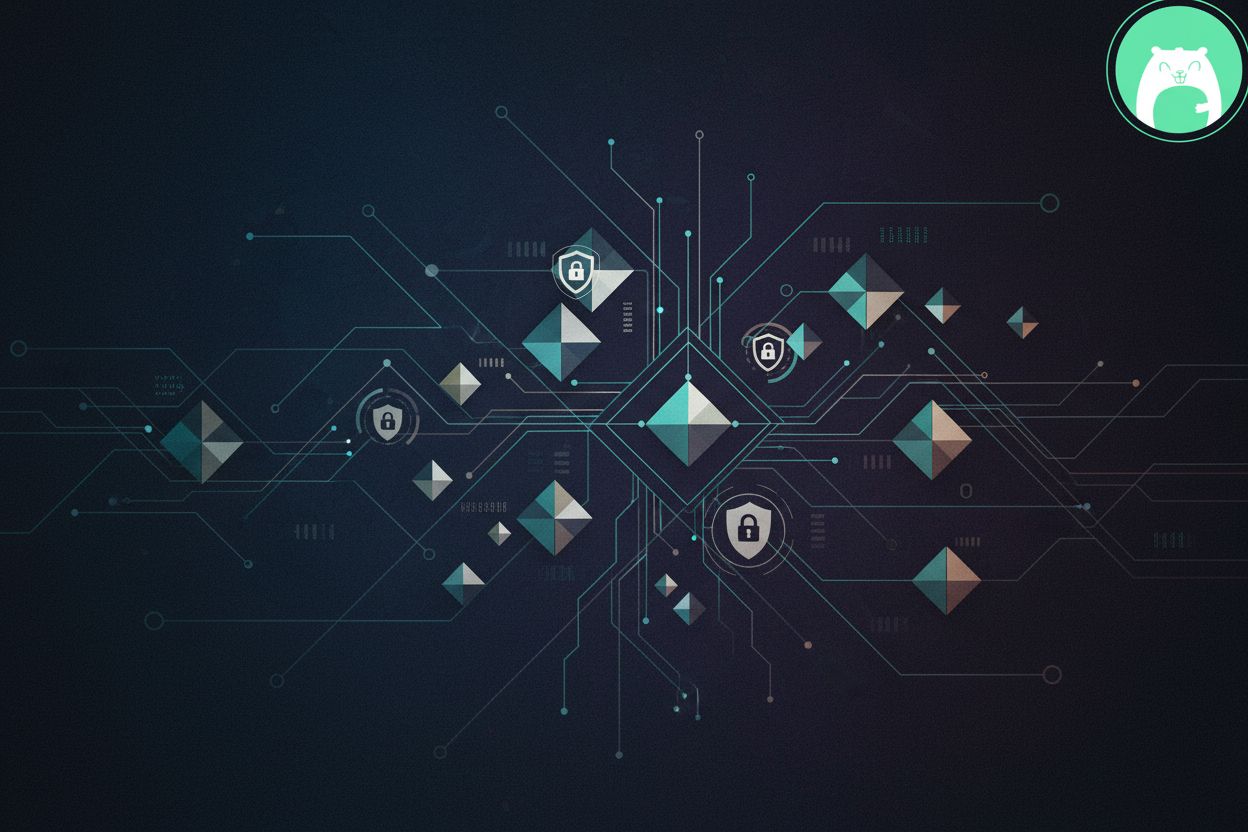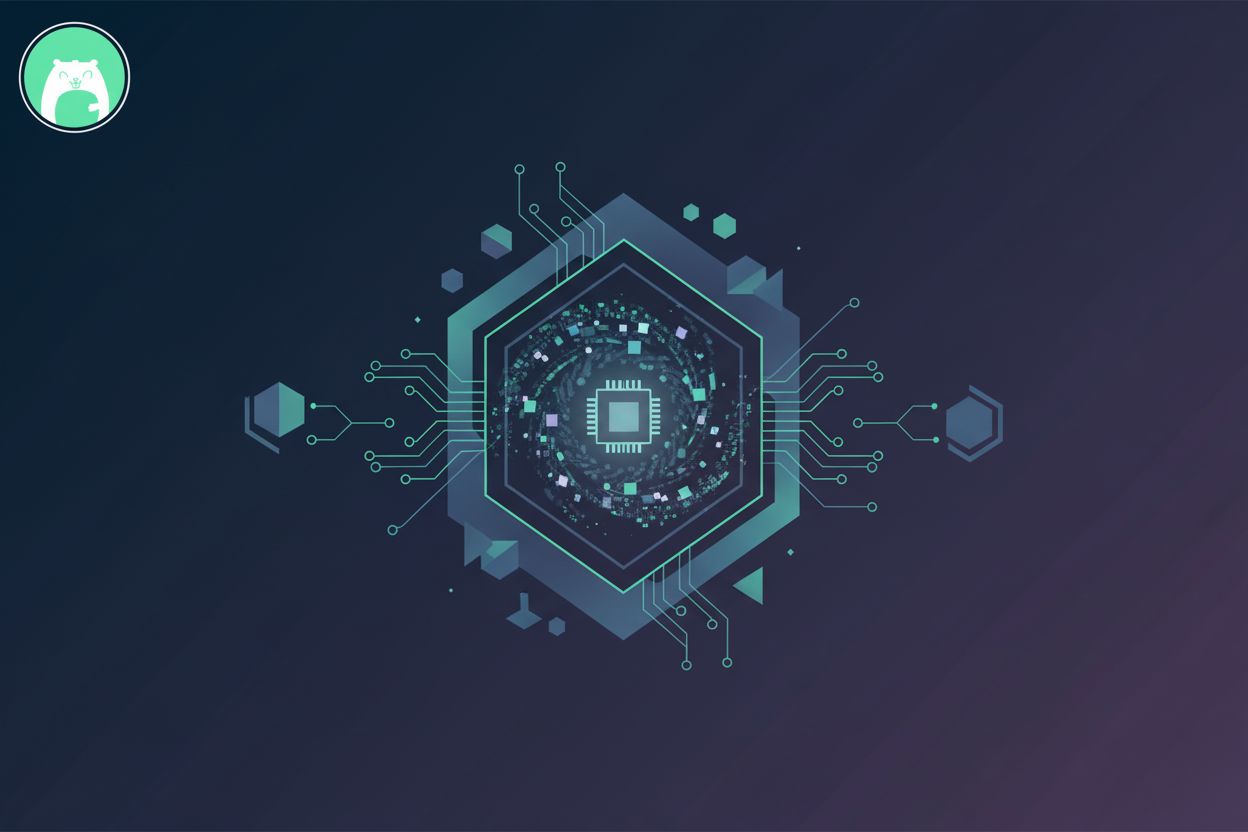Gopher DB: Unmatched Database Security with Zero Trust Protection

TL;DR
Summary
In today's digital era, securing databases is more critical than ever. With the rise of remote work, cloud computing, and AI adoption, traditional security measures are no longer sufficient to protect sensitive data from evolving threats. Gopher DB introduces innovative approaches to database security, offering bulletproof protection with cutting-edge technologies. This blog explores the importance of database security, the limitations of traditional methods, and how Gopher DB provides unparalleled security solutions to safeguard your data assets.
Gopher DB: Micro-segment Database Servers and Web Servers with Inbound Traffic Disabled, Powered by Gopher Private IP and Micro-segmentation
What Is Database Security?
Database security refers to the collective measures used to protect and secure a database or database management software from illegitimate use and malicious cyber threats. It encompasses a range of security tools, controls, and practices designed to safeguard the confidentiality, integrity, and availability of data.
Why Do You Need to Secure Databases?
Evolving Vulnerabilities in Modern Environments
- Remote Work: The shift towards remote work has expanded the attack surface, making it easier for cybercriminals to exploit unsecured connections and devices.
- Cloud and Hybrid Environments: As organizations migrate to cloud and hybrid infrastructures, ensuring consistent security across multiple platforms becomes challenging.
- AI Adoption: AI systems require vast amounts of data, increasing the potential impact of a data breach.
- Multi-Environments (Testing, Staging, Production): Different environments can have varying security postures, creating vulnerabilities if not managed properly.
What's the Traditional Way to Secure Databases?
Traditional database security often relies on perimeter defenses like firewalls, intrusion detection systems, and basic access controls. These methods include:
- Static Access Controls: Using fixed IP addresses and user roles to manage access.
- Network Segmentation: Separating network traffic to isolate sensitive systems.
- Encryption: Employing standard encryption methods for data at rest and in transit.
- Authentication Mechanisms: Utilizing passwords and multi-factor authentication for user verification.
While these methods provide a foundational level of security, they have significant limitations in today's dynamic and sophisticated threat landscape.
Gopher DB's Innovative Security Approaches
Gopher DB introduces a suite of advanced security features that address the shortcomings of traditional methods.
1. Enforcing Gopher Private IP Matching Between Web and Database Servers
Traditional Approach: Web servers and database servers often reside within the same network segment, allowing any server within that segment to potentially access the database.
Gopher DB Solution: Enforces that web servers' Gopher Private IP addresses match those specified by the database server, even if they share the same network segment. This is another layer of security apart from whitelist IPs in database's configuration.
Customer Value: This ensures only authorized web servers can communicate with the database, significantly reducing the risk of unauthorized access.
2. Time-Bound Admin Access Without Compromising Security
Traditional Approach: Administrators are granted ongoing access to database environments, increasing the risk of credential compromise.
Gopher DB Solution: Allows admin access on an as-needed basis with time-bound permissions.
Customer Value: Minimizes the window of opportunity for unauthorized access while maintaining operational efficiency.
3. Role-Based Access Control Without Excessive Rights
Traditional Approach: Users are often given broad access rights that exceed their job requirements.
Gopher DB Solution: Implements strict role/group-based access control to ensure users have only the necessary permissions.
Customer Value: Reduces the risk of insider threats by preventing privilege misuse.
4. Attribute-Based Access Control for Dynamic Requirements
Traditional Approach: Static access controls can't adapt to changing conditions like time or location.
Gopher DB Solution: Utilizes attribute-based access control (ABAC) to enforce policies based on dynamic attributes such as time, IP address, and identity.
Customer Value: Offers flexibility and enhanced security by adapting to real-time conditions.
5. Micro-Segmentation for Network Segregation
Traditional Approach: Limited network segmentation allows attackers to move laterally once inside the network.
Gopher DB Solution: Uses micro-segmentation to segregate database servers from web servers, assigning them to different network segments.
Customer Value: Prevents lateral movement within the network, containing potential breaches.
6. Context-Aware Endpoint Authentication
Traditional Approach: Relies on basic authentication methods that can be bypassed.
Gopher DB Solution: Enforces context-aware authentication using IP addresses, location data, and device fingerprints.
Customer Value: Ensures that only authorized and verified devices can access the database servers.
7. Quantum-Resistant End-to-End Encryption
Traditional Approach: Uses encryption methods vulnerable to future quantum computing attacks.
Gopher DB Solution: Implements quantum-resistant encryption to protect data from advanced threats.
Customer Value: Future-proofs your data security against emerging quantum computing threats.
8. Eliminating the Need for Public IPs
Traditional Approach: Database servers often require public IPs, exposing them to the internet.
Gopher DB Solution: Removes the need for public IPs by utilizing Gopher private IPs, making the servers inaccessible publicly.
Customer Value: Significantly reduces exposure to external threats by keeping servers off the public internet.
9. Built-In Zero Trust and SASE Capabilities
Traditional Approach: Operates on the assumption that everything inside the network is trustworthy.
Gopher DB Solution: Adopts Zero Trust principles and Secure Access Service Edge (SASE) capabilities to verify every access attempt.
Customer Value: Minimizes both insider and outsider threats by never trusting by default.
10. Disabling Inbound Traffic and Closing Ports
Traditional Approach: Open ports for inbound traffic create vulnerabilities.
Gopher DB Solution: Disables inbound traffic and closes all database server ports.
Customer Value: Bulletproofs your test, staging, and production environments from external threats.
11. Secure Remote Access via Gopher Tunnels
Traditional Approach: Remote access can be a security risk if not properly managed.
Gopher DB Solution: Allows database admins to access servers through secure Gopher tunnels, adhering to Zero Trust and SASE principles.
Customer Value: Eliminates unauthorized access while maintaining necessary administrative functions.
Use Cases
- Financial Institutions: Protect sensitive financial data with quantum-resistant encryption and strict access controls.
- Healthcare Providers: Safeguard patient records by enforcing context-aware authentication and micro-segmentation.
- E-commerce Platforms: Secure customer information by preventing lateral movement and closing inbound ports.
- Remote Workforce Management: Enable secure, time-bound access for administrators without exposing databases to public networks.
Inheriting Gopher’s Out-of-the-Box Security From Layer-3/4
1. Enforcing Tunnel Match at Layer-3/4
Customer Value: Ensure that only legitimate and secure tunnels are established, reducing the risk of unauthorized access and data breaches.
Gopher DB enforces tunnel matches at both Layer-3 (network layer) and Layer-4 (transport layer), ensuring that all data passing through is tightly controlled and validated. This layer of scrutiny is absent in legacy proxies, leaving them vulnerable to unauthorized traffic.
2. Enforcing Policy Match at Layer-3/4
Customer Value: Maintain strict compliance with organizational policies, ensuring that all network traffic adheres to predefined security rules.
Gopher DB enforces policy matches at both Layer-3 and Layer-4, preventing any non-compliant traffic from entering or leaving the network. Legacy proxies often lack this capability, leading to potential security gaps.
3. Enforcing Network Segment Match at Layer-3/4
Customer Value: Protect against lateral data breaches by ensuring that network segments are isolated and secure.
Gopher DB enables micro-segmentation at Layer-3/4, ensuring that each network segment is independently secured and cannot be accessed laterally by unauthorized users or devices. This prevents the spread of breaches across the network, a feature not offered by legacy proxies.
4. Traffic Observability at Layer-3/4
Customer Value: Gain complete visibility into network traffic to detect anomalies, optimize performance, and ensure compliance.
Gopher DB provides traffic observability at Layer-3/4, allowing organizations to monitor all traffic patterns and take action on any suspicious activity. Legacy proxies typically do not offer this level of insight, leaving potential blind spots.
5. Quantum-Resistant End-to-End Encryption
Customer Value: Future-proof your network security by protecting against emerging quantum computing threats, ensuring data integrity and confidentiality.
Gopher DB offers quantum-resistant encryption to safeguard data from advanced man-in-the-middle attacks, providing a level of security that far exceeds what is possible with legacy proxies.
6. Pluggable Framework to Extend Data Plane
Customer Value: Adapt to evolving security needs by extending the proxy’s functionality without replacing the entire system.
The pluggable framework of Gopher DB allows organizations to extend the data plane with new features and capabilities as needed, ensuring the proxy evolves with the business’s needs. Legacy proxies, by contrast, are often rigid and difficult to upgrade.
7. Disabling Inbound Traffic to Prevent External Threats
Customer Value: Protect the network by restricting inbound traffic and allowing only authorized connections, reducing exposure to external threats.
Gopher DB can disable inbound traffic entirely, permitting only Gopher tunnels with NAT traversal capabilities to communicate. This feature significantly enhances security, offering protection that legacy proxies simply cannot match.
Conclusion
The security landscape is continuously evolving, and traditional database security methods are no longer sufficient to protect against advanced threats. Gopher DB offers a comprehensive suite of innovative security features that address modern vulnerabilities head-on. By implementing Gopher DB, organizations can ensure their data is protected with bulletproof security measures, providing peace of mind in an uncertain digital world.
Final Thoughts and Recommendations
Investing in advanced database security is not just a technological upgrade—it's a strategic move to protect your organization's most valuable asset: its data. Gopher DB provides cutting-edge technologies that not only secure your data but also enhance operational efficiency and flexibility. We highly recommend organizations to adopt Gopher DB to stay ahead of threats and safeguard their future.





